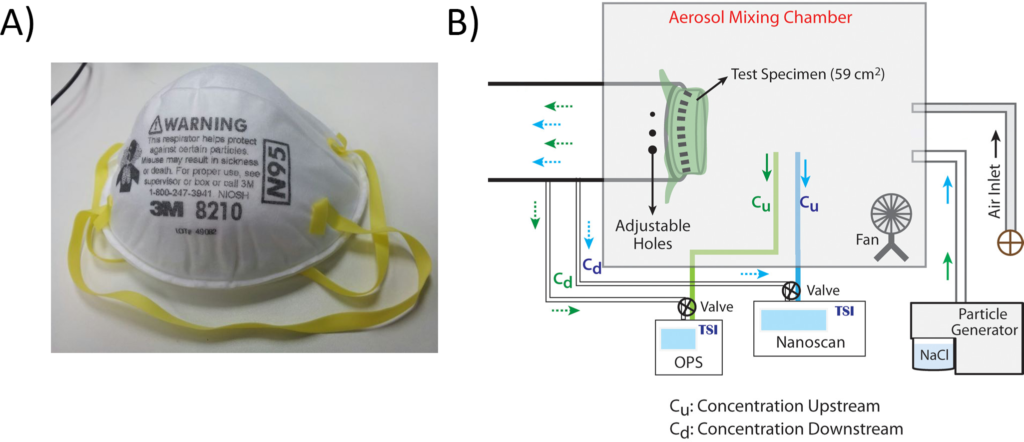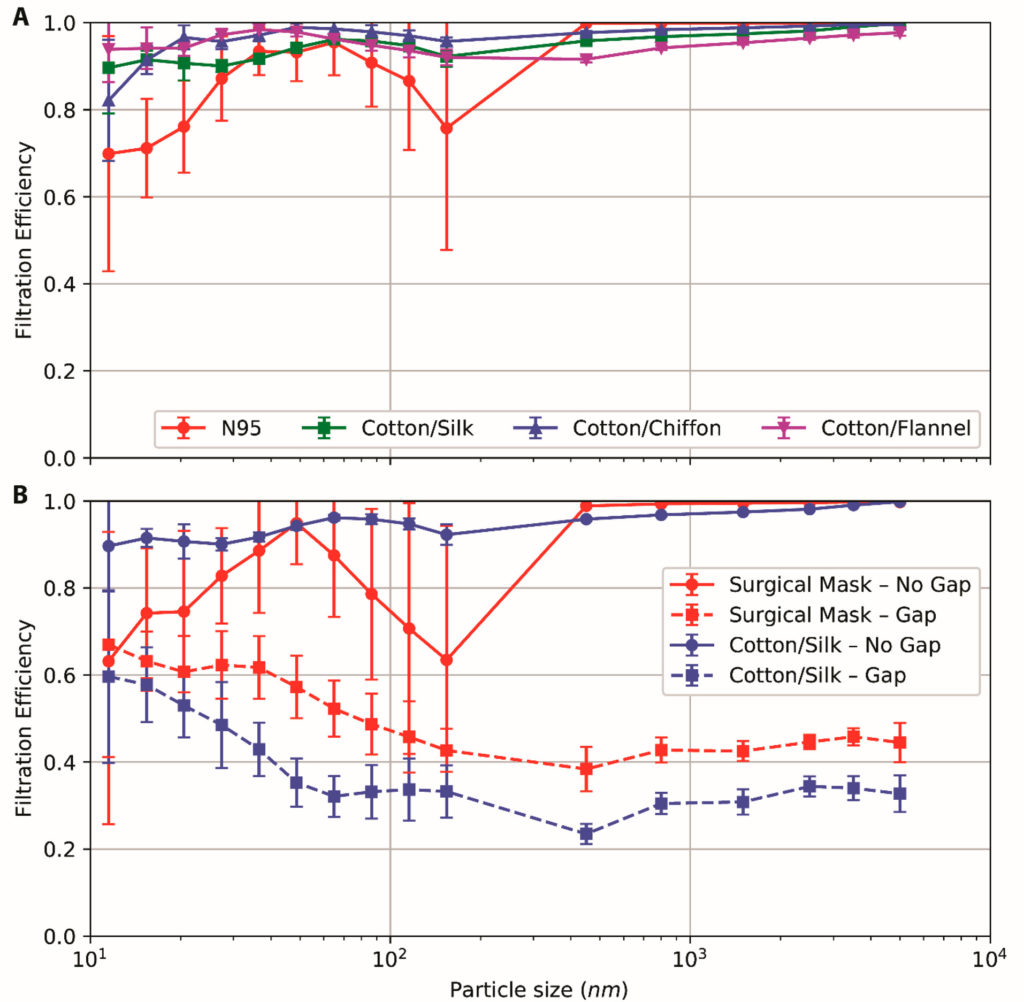Featured Image by Gustavo Fring from Pexels
Title: Aerosol Filtration Efficiency of Common Fabrics Used in Respiratory Cloth Masks
Authors: Abhiteja Konda, Abhinav Prakash, Gregory A. Moss, Michael Schmoldt, Gregory D. Grant, and Supratik Guha
Journal: ACS Nano
Year: 2020
With the ongoing COVID-19 global pandemic, it’s common to see people in public spaces wearing face masks. While these are fantastic tools for preventing potentially infectious people from spreading the disease, they only work if they are both made of the right materials and worn properly. But not all face masks are the same. As the pandemic continues, more and more people are wearing home-made face masks made with common fabrics, such as cotton. But how effective are these materials at filtering possibly harmful materials from the air?
Face masks are designed to capture and remove tiny particles from the air that you are breathing in and out. These particles can be solid (like smoke) or liquid (like aerosols). While many people think face masks are effective against the spread of disease because they block the wearer from inhaling infectious aerosols, they primarily work by preventing the wearer from spreading their disease when breathing out tiny droplets of moisture.
One of the most common (and currently hard to find) type of face mask is the N95 mask (Figure 1A), called that because it can filter out 95% of all particles 300 nm and larger. These masks are usually made of a dense filter of plastic fibers, which catches particles. Many governments are asking that these masks be left available for the especially vulnerable healthcare workers on the frontline of the COVID-19 pandemic. Because of this, people are turning to homemade masks made of a variety of different materials, most of which have never been tested for their filtration properties.

To help address this quickly, the researchers behind this paper designed a setup to test how effective common fabrics are as face masks (Figure 1B). It consisted of a device capable of making a mist with finely controlled droplet sizes, which was then blown through a small opening. They placed the different fabrics over the opening, and measured the concentration of aerosol particles both before and after the air flowed through the cloth. This way, they could see how efficient the filtration was (what percentage of particles were filtered out) for a wide range of particle sizes.
First, they tested masks made of a single material, like a natural fiber such as cotton or an artificial polyester chiffon. For the cotton samples, only quilting cotton (which is has a thick layer of batting) and 600 thread count cotton were at all effective at blocking out particles (Figure 2A). The 80 thread count cotton (which many homemade masks are made from), filtered out almost nothing, making it a very ineffective filter. The other fabrics (natural silk, polyester chiffon, and polyester/cotton flannel) worked moderately well, filtering out a significant portion of particles, but not working nearly as well as the high thread count cotton (Figure 2B).

After these results, the researchers decided to combine their two samples. They hypothesized that each type of fabric filtered out particles by different mechanisms. The cotton, with its extremely tightly woven threads (in the case of high thread count), physically blocked the larger particles. The other materials (like natural silk and polyester) are made of fibers that tend to have a slight electrostatic charge, which can attract smaller, slightly charged droplets out of the air. Combining the two should give the best of both worlds, blocking a wider range of particles.
For their new masks, the researchers sandwiched two different fabrics together. They always started with the 600 thread count cotton, which performed the best of all the cotton, and tested it with layers of natural silk, polyester chiffon, and polyester/cotton flannel (Figure 3A). All three performed just as well as a manufactured N95 mask, even beating it for smaller particle sizes, which N95 masks are not specifically designed to filter.

As a final note, the researchers wanted to emphasize that masks only work when they are worn correctly and form a tight seal around the face. They tested this by drilling tiny holes (about 1% the size of the filter) into the walls around the fabric filter. The masks went from being over 90% effective to near only 40% (Figure 3B), drastically reducing their effectiveness.
The scientists behind this study worked hard to complete their work quickly enough that people could take advantage of their findings during the extremely real-world, potentially deadly situation that is the COVID-19 pandemic. Their main conclusion is that while cotton fabric can be an extremely effective material in home-made face masks, it is only effective with high thread counts and works best when combined with another fabric, like natural silk or polyester.
If you or someone you know is making or wearing a cotton-based face mask, it might be a good idea to take these guidelines into consideration. With all the important medical and scientific research working towards keeping people safe and healthy right now, it’s only a matter of time before we all weather this storm and come out stronger, more informed, and better equipped on the other side.

